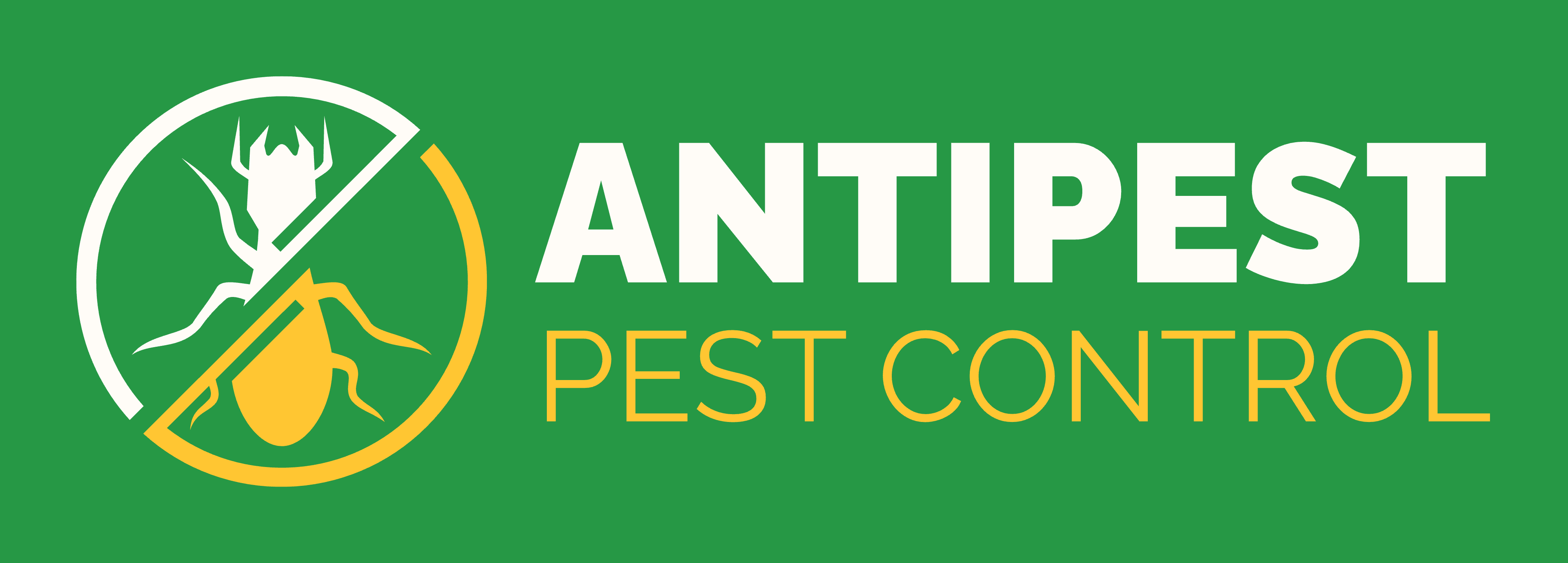Caterpillars may seem harmless, but they can quickly damage gardens, lawns, and crops by stripping leaves and weakening plants. Understanding How to Get Rid of Caterpillars naturally and safely is essential to protect your green space. Whether you’re dealing with cabbage worms, tomato hornworms, or tent caterpillars on fruit trees, knowing How to Get Rid of Caterpillars without harming beneficial insects keeps your garden balanced.
Natural remedies like neem oil, handpicking, and encouraging birds or beneficial insects are effective ways to control them. By following eco-friendly methods, you’ll not only save your plants but also preserve the environment. Learning How to Get Rid of Caterpillars ensures healthy growth, while consistent prevention keeps infestations away. With the right approach, you’ll always know How to Get Rid of Caterpillars and maintain a thriving, pest-free garden.
Table of Contents
Understanding Caterpillars and Their Impact
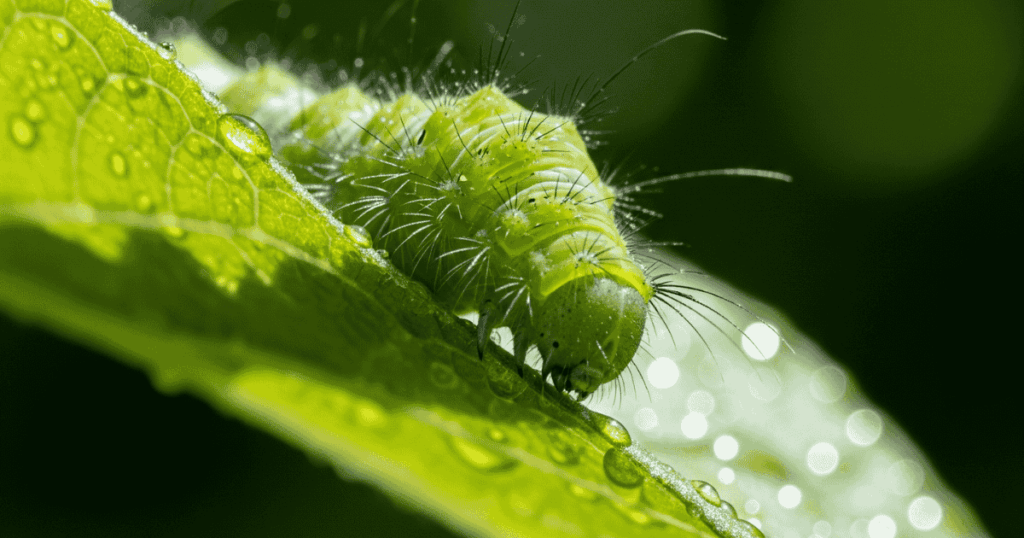
Before exploring How to Get Rid of Caterpillars, it’s important to understand their behavior. Caterpillars are the larval stage of moths and butterflies. While they eventually transform into pollinators, during their larval phase, they consume large amounts of foliage. This can leave crops and ornamentals looking skeletonized.
Most caterpillars target the soft, tender leaves of a plant, but some types can bore into fruits, vegetables, or stems. While not all species are harmful, a severe infestation can result in:
- Stunted plant growth
- Reduced fruit or flower production
- Defoliation that weakens the plant
- Loss of crop yield in agricultural fields
This is why knowing How to Get Rid of Caterpillars is essential for gardeners and farmers alike. By learning How to Get Rid of Caterpillars effectively, you can protect plants while maintaining a healthy garden ecosystem.
Why Are Caterpillars a Problem?
Caterpillars are the larval stage of moths and butterflies, which means their primary purpose is to eat and grow. Unfortunately, their appetite is what makes them destructive. In large numbers, they can turn a thriving garden into bare stalks within days.
Some common signs of caterpillar damage include:
- Holes in leaves
- Skeletonized foliage
- Droppings on leaves (frass)
- Wilting or stunted growth
Learning how to get rid of caterpillars is not only about saving plants but also about preventing future outbreaks.
Common Types of Caterpillars Found in Gardens
Knowing the type of caterpillar helps determine the best control method. Below is a table summarizing some common species:
| Caterpillar Type | Host Plants | Appearance | Damage Caused |
| Cabbage Looper | Cabbage, broccoli | Green, looping motion | Holes in leaves, heavy defoliation |
| Tomato Hornworm | Tomato, pepper | Large green, horned tail | Strips leaves and eats fruits |
| Tent Caterpillar | Fruit trees | Hairy, found in web tents | Skeletonized leaves, weakened branches |
| Armyworms | Corn, grains | Brownish-green, striped | Rapid destruction of entire crops |
| Cutworms | Lettuce, beans | Fat, brown, cut stems | Chew plant stems at the soil level |
By identifying which kind is attacking, you can choose accurate prevention and removal techniques.
Natural Methods on How to Get Rid of Caterpillars?
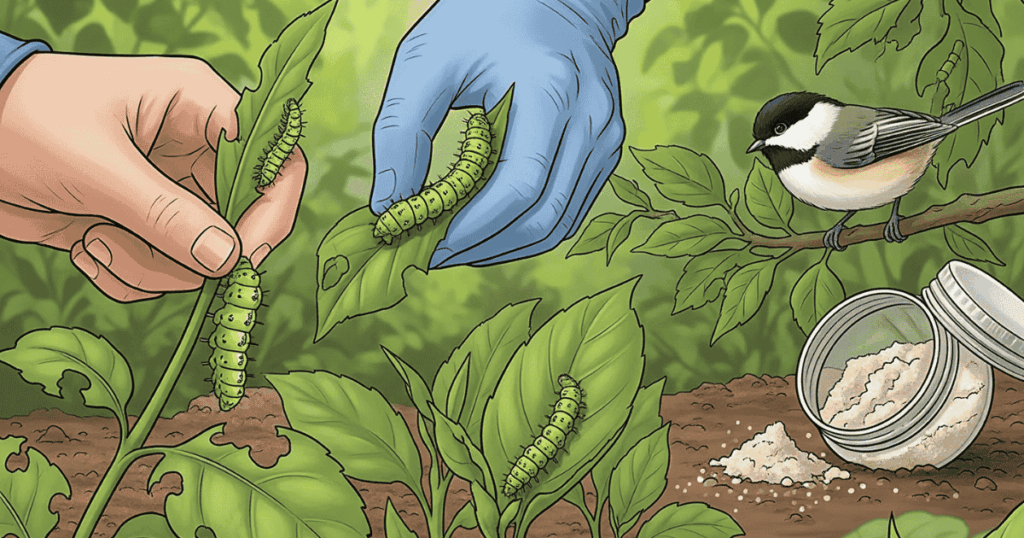
Natural control methods are preferred by many gardeners who want to avoid harsh chemicals. These methods are safe for pets, humans, and beneficial pollinators. If you’re wondering How to Get Rid of Caterpillars without harming your garden ecosystem, these natural solutions are highly effective.
Handpicking Caterpillars
It may sound simple, but handpicking is one of the easiest ways to reduce caterpillar numbers. Wearing gloves, remove caterpillars and drop them into soapy water. This approach works best for smaller gardens or mild infestations and is a direct way to start with How to Get Rid of Caterpillars quickly.
Neem Oil Spray
Neem oil is a powerful natural pesticide. It disrupts the feeding habits of caterpillars and prevents them from maturing into adult moths or butterflies. Spray diluted neem oil directly on infested plants for effective results. Gardeners often rely on this method when learning How to Get Rid of Caterpillars safely and organically.
How to Use Neem Oil for Caterpillars:
- Mix 2 tablespoons of neem oil with 1 gallon of water.
- Spray both sides of the leaves in the morning or evening.
- Repeat every 5–7 days until the infestation reduces.
Bacillus thuringiensis (Bt)
Bt is a natural bacteria found in soil that specifically targets caterpillars. When caterpillars eat leaves sprayed with Bt, they stop feeding and die within a few days. This is one of the safest biological controls available, making it an excellent option for How to Get Rid of Caterpillars in vegetable gardens.
Encouraging Birds and Predators
Birds, spiders, and parasitic wasps feed on caterpillars. Planting native shrubs, flowers, or adding birdhouses can attract natural predators to your garden. This long-term natural pest control method is another smart approach when considering How to Get Rid of Caterpillars without chemicals.
DIY Soap Spray
Soap and water can suffocate young larvae. Create a mixture with mild liquid soap and warm water, then spray it directly on affected areas. This eco-friendly solution offers another layer of control for those figuring out How to Get Rid of Caterpillars in a cost-effective way.
Recipe:
- 1 tablespoon mild dish soap
- 1 quart of water
- Apply during cooler hours to avoid leaf burn
Natural Remedies for Caterpillars
| Natural Method | How It Works | Best Used For | Safety Level |
| Handpicking | Removes them manually from plants | Small gardens, light infestations | Very Safe |
| Neem Oil | Disrupts feeding and growth | Vegetables, flowers, ornamentals | Safe around pets |
| Bacillus thuringiensis | Kills caterpillars after ingestion | Large infestations, edible plants | Highly Targeted |
| Attracting Predators | Encourages birds/wasps to feed on them | Preventive, outdoor gardening | Eco-friendly |
Organic Pest Control Solutions on How to Get Rid of Caterpillars?
When natural remedies fail, organic pest solutions can strengthen your defense. These solutions answer the question of how to get rid of caterpillars in a safe but effective manner.
Bacillus thuringiensis (Bt)
Bt is a naturally occurring bacteria widely used in organic gardening. When caterpillars ingest it, their digestive system shuts down, leading to safe but efficient elimination. Unlike chemicals, Bt is harmless to humans, pets, and most beneficial insects. This makes it one of the best solutions for gardeners learning How to Get Rid of Caterpillars organically.
Horticultural Oils
These oils work by coating larvae and suffocating them. While not as common as neem, they add an extra layer of protection when used sparingly. Many growers consider this method an effective supplement when exploring different ways on How to Get Rid of Caterpillars without harsh chemicals.
Biological Controls
Some gardeners use parasitic nematodes that infect soil-dwelling larvae such as cutworms. This biological method reduces caterpillar populations from below the ground up and helps strengthen long-term pest control strategies. It’s a natural addition to your toolkit if you’re serious about learning How to Get Rid of Caterpillars and keeping your garden healthy.
How to Get Rid of Caterpillars: Chemical Methods
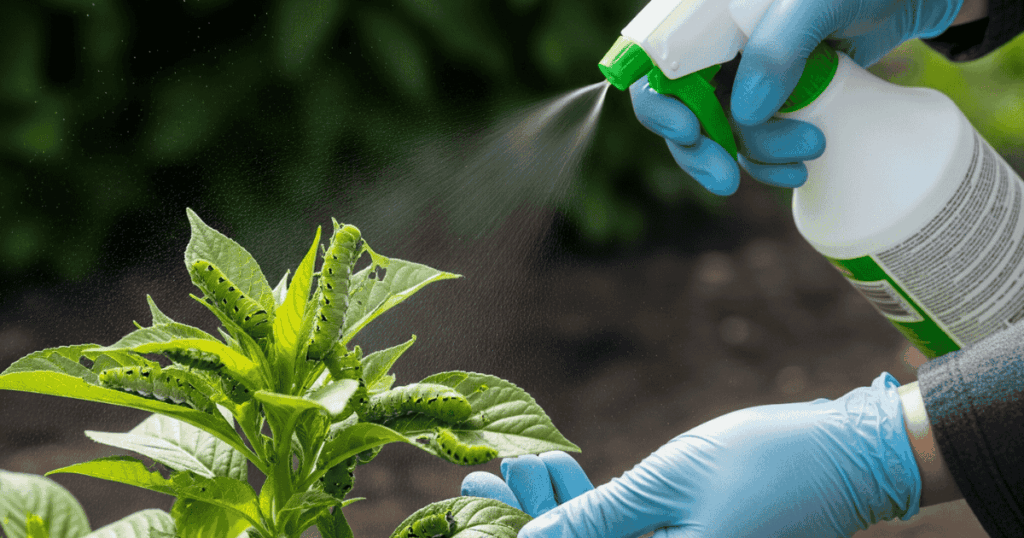
When natural remedies aren’t enough, chemical solutions can offer faster results. These should be used carefully since they may also affect beneficial insects. For gardeners learning How to Get Rid of Caterpillars in severe infestations, chemical options provide quick control but must be used with caution.
Insecticidal Soaps
These soaps break down the outer coating of caterpillars, leading to dehydration. They are less toxic than synthetic pesticides and ideal for household gardens. This method is often chosen by those searching for a safer chemical option when figuring out How to Get Rid of Caterpillars effectively.
Pesticides
Sprays containing pyrethroids can quickly kill caterpillars. However, they should be a last resort since they affect bees and other pollinators. Always follow instructions carefully, and only apply when absolutely necessary. For large-scale infestations, pesticides can be part of a broader strategy on How to Get Rid of Caterpillars while balancing plant health and environmental safety.
Chemical Vs Natural Methods
| Approach | Pros | Cons | Best For |
| Natural | Safe, eco-friendly, selective | Slower, requires consistency | Home gardens, sensitive areas |
| Chemical | Fast results, large coverage | Harms pollinators, resistance risk | Severe infestations |
Preventive Measures to Keep Caterpillars Away
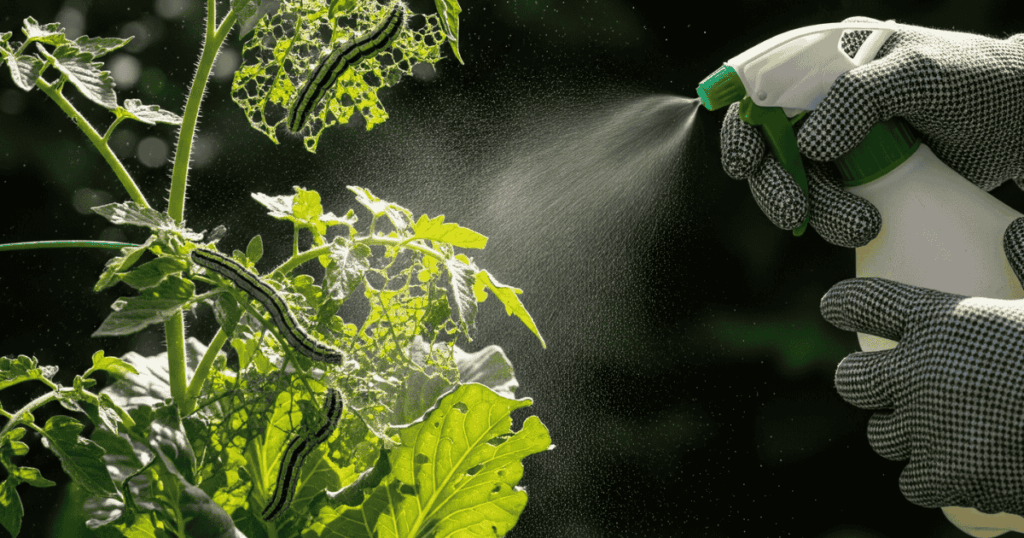
Preventing caterbugs is as important as learning how to get rid of caterpillars once they appear. With the right preventive measures, you minimize future outbreaks.
Crop Rotation
Changing plant locations each season prevents pests from establishing themselves in one spot. Caterpillars that hatch next season may not find their favorite plants.
Floating Row Covers
Lightweight fabric row covers allow sunlight and water through while blocking caterpillars and moths from laying eggs. This method is particularly effective for vegetables.
Regular Inspection
Checking the underside of leaves daily for eggs or larvae can stop infestations early. Early action ensures that pests don’t spread uncontrollably.
Prevention Strategies
| Prevention Method | Benefit | Suitable For |
| Crop Rotation | Stops pest life cycles | Vegetable beds, small farms |
| Row Covers | Physical barrier against pests | Leafy greens, seedlings |
| Regular Checks | Detects problem early | Any type of garden |
Caterpillar Prevention Table
Here’s a quick comparison of prevention versus control methods so you can choose the right strategy:
| Method Type | Examples | Pros | Cons |
| Manual Control | Handpicking, egg removal | Zero cost, immediate effect | Time-consuming |
| Natural Remedies | Neem oil, soap spray | Eco-friendly, safe for pollinators | Requires frequent application |
| Biological Solutions | Bt, predatory insects | Highly effective, targeted action | Works slower |
| Preventive Barriers | Row covers, spacing | Stops infestation before it starts | Limited to smaller gardens |
| Chemicals | Pyrethroids, carbaryl | Fast results | Harming beneficial insects |
Protecting Specific Plants from Caterpillars
Different caterpillars prefer different plants, so learning how to get rid of caterpillars effectively depends on the crops you want to protect.
Vegetable Gardens
- Use Bt against cabbage worms, tomato hornworms, and cutworms.
- Remove nearby weeds that may harbor caterpillars.
- Cover seedlings to prevent egg-laying.
Fruit Trees
- Use sticky bands on the trunk to trap climbing caterpillars.
- Spray neem oil or Bt during early growth stages.
- Maintain tree health with proper pruning and fertilization.
Ornamental Plants
- Spray soapy water to discourage leaf-eating pests.
- Encourage beneficial insects like ladybugs.
- Pick visible caterpillars directly from plants.
Eco-Friendly Practices When Getting Rid of Caterpillars
Since caterpillars eventually become butterflies and moths, balance is important. Eliminating them completely is neither realistic nor ecologically sound. The goal should be management, not eradication.
- Avoid blanket pesticide use that kills pollinators.
- Target only infested plants or areas.
- Save some plants as “sacrifice zones” where caterpillars can feed without causing major damage.
When to Call a Professional to Get Rid of Caterpillars?

While natural and organic methods work for most infestations, sometimes the problem can grow beyond a home gardener’s control. Knowing How to Get Rid of Caterpillars effectively often means recognizing when expert help is necessary. Call a professional pest control service if:
- The caterpillar infestation covers a large area such as orchards, farms, or multiple garden sections.
- Repeated DIY and organic treatments (like neem oil or Bt) fail to control the population.
- The caterpillars are attacking valuable crops, fruit trees, or ornamentals with high economic or sentimental value.
- You notice structural plant damage, severe defoliation, or signs that other pests are joining the infestation.
Hiring a licensed pest expert ensures your garden is treated safely and efficiently, giving you long-term results and helping you understand better How to Get Rid of Caterpillars in the future.
For comprehensive and hassle-free Caterpillars removal and long-term pest prevention, trust the professionals at Antipest Office. Visit us at the Antipest Office, Our trained technicians use safe and effective methods to protect your home and business. For service bookings and consultations, call us at +91 9819018398 .
Conclusion
If your plants are under attack, it’s vital to know How to Get Rid of Caterpillars in safe and sustainable ways. From handpicking to using Bacillus thuringiensis or selective chemical options, there are practical methods to protect your garden. By applying prevention techniques like crop rotation and row covers, you’ll also limit future outbreaks.
Understanding How to Get Rid of Caterpillars gives you both quick fixes and long-term solutions. With the right approach, you’ll always be ready and confident about How to Get Rid of Caterpillars whenever they appear, keeping your garden healthy and thriving.
How to Get Rid of Caterpillars? – FAQs
How to get rid of caterpillars on vegetable plants?
Use neem oil spray, floating row covers, and handpicking daily to remove caterpillars from vegetable plants without harming the crops.
How to get rid of caterpillars on trees naturally?
Apply Bacillus thuringiensis (Bt) on tree leaves and prune affected branches to control tree caterpillars naturally.
How to get rid of caterpillars on tomato plants?
Remove tomato hornworms by hand, spray neem oil on leaves, and encourage parasitic wasps that prey on the caterpillars.
How to get rid of caterpillars in my garden fast?
Handpick caterpillars and drop them into soapy water for immediate results while combining sprays of neem or Bt for lasting control.
How to get rid of caterpillars without killing butterflies?
Use targeted methods like Bt or row covers to control caterpillars while avoiding broad-spectrum insecticides that harm butterfly populations.
How to get rid of caterpillars on fruit trees?
Destroy egg clusters, prune tents of webworms, and spray horticultural oil or Bt on fruit tree foliage to stop caterpillar damage.
How to get rid of caterpillars naturally?
Try neem oil, garlic spray, vinegar solution, or introducing birds and beneficial insects for all-natural caterpillar control.
How to get rid of caterpillars eating leaves?
Regular inspection, manual removal, and spraying diluted soap solution on leaves is an effective way to stop caterpillars from stripping foliage.
How to get rid of caterpillars organically in farming?
Farmers can use Bt formulations, neem oil, or release parasitic wasps for large-scale organic caterpillar management.
How to get rid of caterpillars permanently?
Prevent infestations by removing eggs, using row covers, planting repelling herbs, and regularly monitoring plants alongside Bt treatments.

